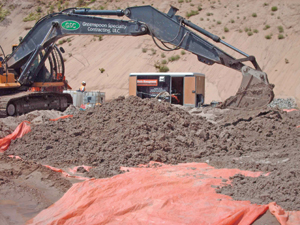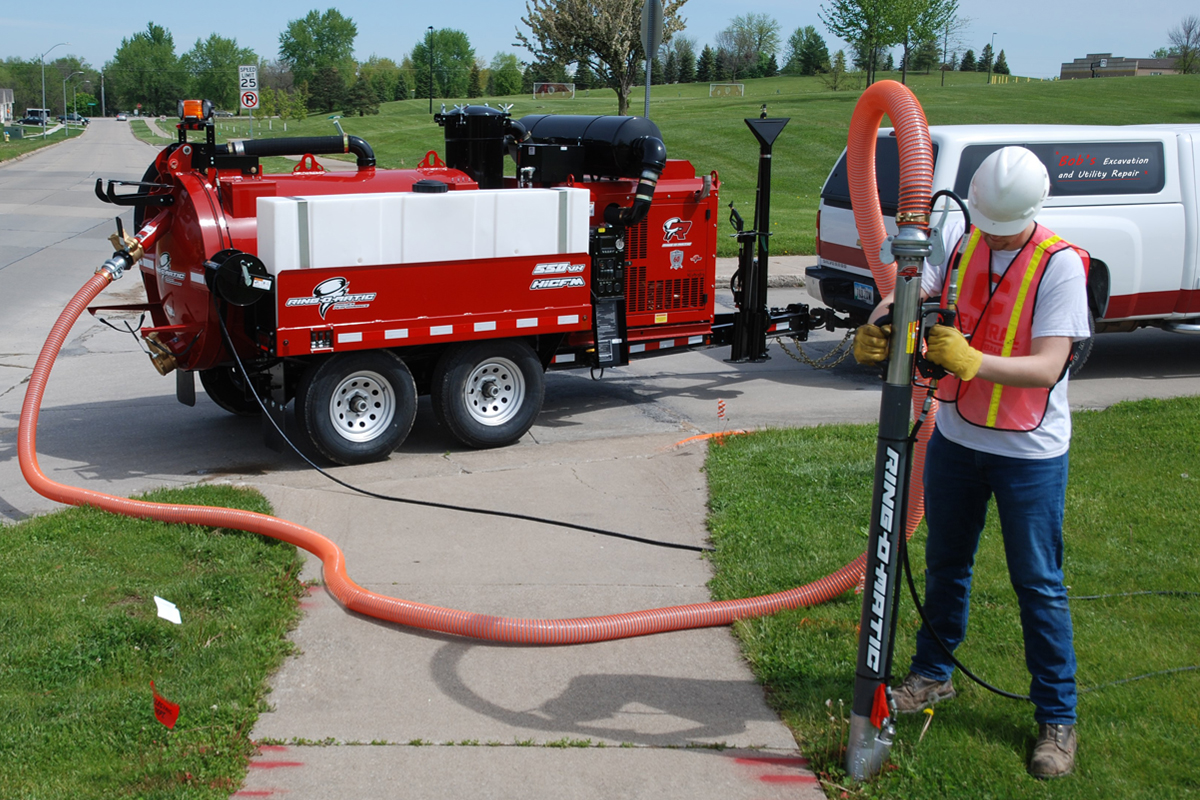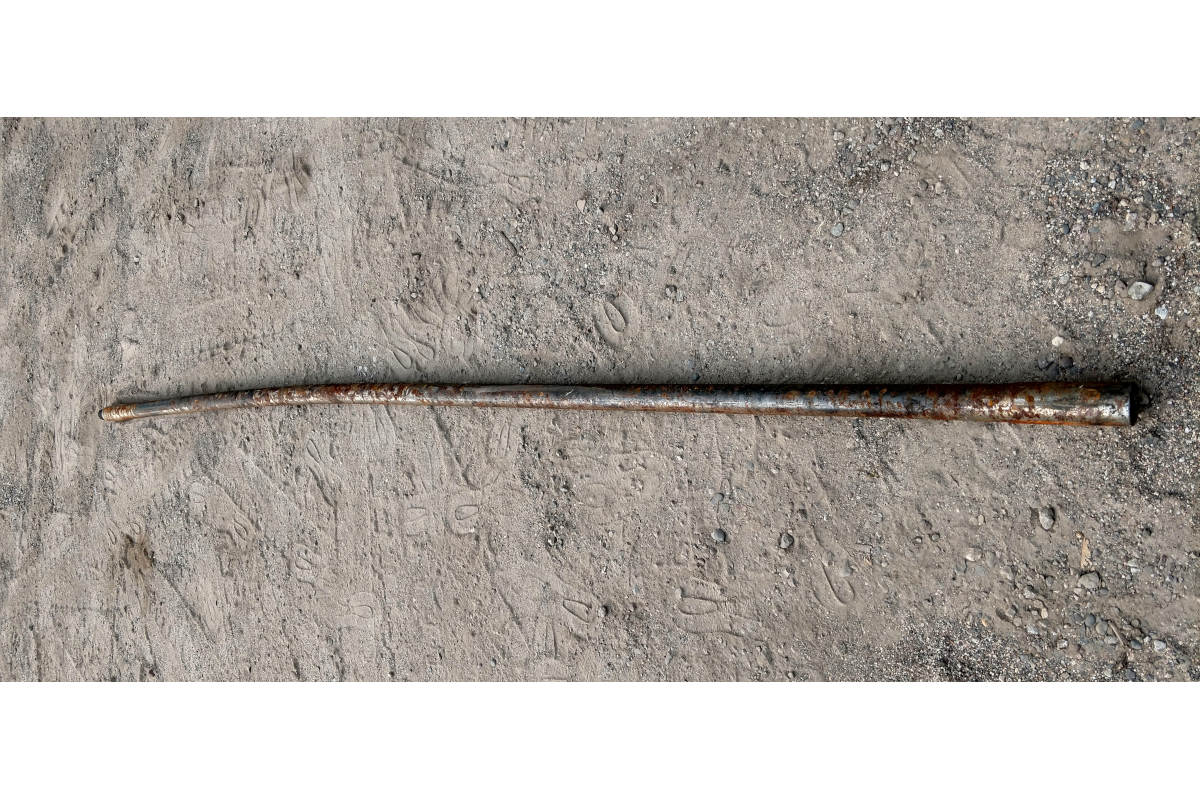Drill Mud or Industrial Liquid Waste?
 As environmental regulations continue to come to the forefront, the HDD industry is now being challenged to change its methods in how it handles and disposes of drill muds. For the past 15 to 20 years drillers could simply pick up the drill muds with their vac trucks and either land apply it or dump it in gravel pits.
As environmental regulations continue to come to the forefront, the HDD industry is now being challenged to change its methods in how it handles and disposes of drill muds. For the past 15 to 20 years drillers could simply pick up the drill muds with their vac trucks and either land apply it or dump it in gravel pits.
Both U.S. and Canadian environmental agencies use the same method of waste characterization and, if asked, they would have always characterized the waste produced from the HDD industry (drill muds) as “Liquid Industrial Waste.” Until recently, neither the U.S. nor Canadian environmental agencies have been heavily enforcing the disposal regulations of this waste stream, but in past couple of years, with the additional pressure from governments, they are now demanding change.
Metaflo Technologies (formerly Surface to Surface Waste Management) has been at the forefront of this issue working with the customer, the contractor and government environmental agencies to help in the transition to a more environmentally and user-friendly solution.
The obvious questions are: 1) What is an Industrial Liquid Waste? and, 2) How do we handle drill muds once they have been declared Industrial Liquid Waste?
1) What is Industrial Liquid Waste?
- The environmental agencies characterize waste streams differently, depending whether they are a solid or a liquid. If the waste does not pass what is called the paint filter test or the slump test it is considered liquid waste.
- Both the United States and Canada have adapted similar guidelines for characterizing their waste. The chart shows Canada’s Waste Characterization Flowchart showing the rationale.
- Toward the bottom of the Flow Chart (assuming the drilling does not go through contaminated ground) is the key question: “Is the waste a Liquid Industrial Waste?” There are only a couple of ways to be able to say,
“No” to this question. First, if the waste falls within an exemption (which HDD does not) or secondly, if the drilling is done with pure water, the waste is then considered inert or the same as hydro excavating. As soon as anything is added to the water to assist in the drilling process (i.e. bentonite or polymers), it then becomes an Industrial Liquid Waste.
2) How do you handle drill muds once they have been declared Industrial Liquid Waste?
Metaflo Technologies has been working with contractors for more than five years to answer this question and dispel myths associated with disposing of the drill muds within these regulations.
Two of the most common myths are:
- Disposal costs will increase by 200 to 300 percent to dispose of Industrial Liquid Waste within regulation – Not True.
- Contractors cannot use their own vac trucks onsite – Not True.
The use of onsite solidification of liquid waste saves time and undue handling. Using a Metaflo solidification process, liquids are quickly processed at a rate of 5,000 gallons per hour (or 20 m3 per hour) and within 10 to 15 minutes post-processing will pass both the slump and paint filter tests thereby changing the waste to a solid.
 The associated costs to dispose of a solid waste vs. a liquid waste are considerably reduced. Both transportation and landfill dumping fees (solids in dump trucks vs. liquids in vac-trucks) are significantly lower due to the use of localized disposal facilities and decreased travel times. In addition to the lower disposal fees, costs are further reduced from the significant volume reduction from the evaporation of moisture in the solidified drill muds.
The associated costs to dispose of a solid waste vs. a liquid waste are considerably reduced. Both transportation and landfill dumping fees (solids in dump trucks vs. liquids in vac-trucks) are significantly lower due to the use of localized disposal facilities and decreased travel times. In addition to the lower disposal fees, costs are further reduced from the significant volume reduction from the evaporation of moisture in the solidified drill muds.
Many contractors now have their own vac-trucks and the concern in Ontario was whether they would still be able to use them. In order to transport an Industrial Liquid Waste, it must be manifested and vac-truck haulers must be approved to transport Industrial Liquid Waste. The way the regulations are written is that contractors must manifest all Industrial Liquid Waste but are allowed to transport the waste (as a liquid) within the jobsite – unmanifested. The Ministry of the Environment (MOE) in Ontario has agreed that the entire length of the HDD project where new pipe is being laid is considered the jobsite. This means that contractors can continue to use their vac-trucks and tanks to transport the drill muds anywhere on the job site, whether it is a 100-m or 20-km distance).
Additional benefits and potential cost-savings that have been experienced by utilizing an onsite solidification process are:
- The transformation to solid waste completely eliminates the inherent problems with transporting both hazardous and non-hazardous forms of liquid waste, reducing both insurance costs and legal liability were a spill to occur.
- Cost studies show significant savings with the reduction of vac-trucks required onsite, as well as better utilization of the vac-trucks’ time while onsite.
- Total volume reduction optimizes transportation requirements and helps keep costs down.
Metaflo Technologies continues to work with contractors and government agencies to find new cost-effective methods of disposal for solid waste (for example, in Ontario, the work is being done with the Ministry of Natural Resources to get approval for the disposal of the solids for the rehabilitation of gravel pits and quarries).
The treatment of industrial liquid waste in North America is facing ever intensifying public scrutiny and government regulation. The management of contaminants that could have an impact on the water tables and, subsequently, human health will continue to escalate through regulation. Meeting regulatory environmental requirements does not have to be cost prohibitive with current, on-site solidification technologies.
Andrew McNabb is president and CEO of Metaflo Technologies (formerly Surface to Surface Waste Management), based in Watford, Ontario, Canada.
![]()




